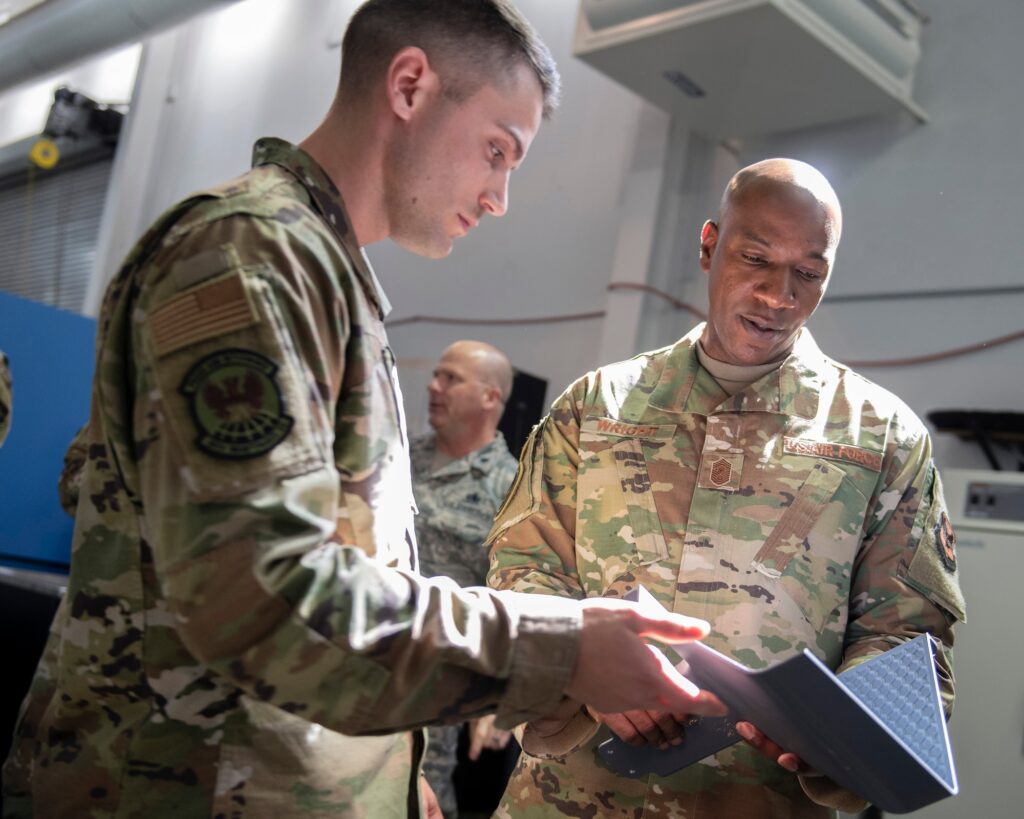This content discusses the impact of 3D printing on military technology. It highlights the benefits of 3D printing in terms of efficiency, cost-effectiveness, customization, adaptability, supply chain resilience, and improved maintenance and repairs. The article explains how 3D printing allows for rapid prototyping and production, reduces dependency on external suppliers, enables the creation of complex and customized designs, enhances supply chain resilience, and improves the performance of military equipment. It concludes by stating that 3D printing is revolutionizing military technology and shaping the future of defense.
Breaking Barriers: How 3D Printing is Reshaping Military Technology
Introduction
With the advancements in technology, 3D printing has emerged as a revolutionary tool changing various industries. One such area is the military, where this cutting-edge technology is reshaping how military technology is developed and deployed. This article explores the impact of 3D printing on military technology and the breaking of barriers that traditional manufacturing processes couldn’t overcome.
Enhancing Efficiency and Cost-Effectiveness
One of the biggest advantages of 3D printing in the military is its ability to enhance efficiency and cost-effectiveness. Unlike conventional manufacturing techniques that require extensive time and resources, 3D printing allows for rapid prototyping and production. This means that military equipment and spare parts can be produced on-demand, reducing the need for large inventories and logistics costs. Additionally, 3D printing enables production in remote locations, reducing dependency on external suppliers and speeding up response times.
Customization and Adaptability
The adaptability and customization offered by 3D printing have immense implications for the military. Traditional manufacturing often relies on standardized designs and expensive tooling. However, 3D printing allows for the creation of complex and customized designs that are tailored to specific military requirements. This flexibility enables the rapid adaptation of equipment to changing needs, whether it be developing modified parts or creating unique tools and weapons systems. The ability to quickly produce prototypes and make design modifications also supports iterative development, enabling faster innovation and testing of new concepts.
Supply Chain Resilience
Another significant advantage of 3D printing for the military is its potential to enhance supply chain resilience. In traditional manufacturing, supply chain disruptions, such as delays or bottlenecks in production, can severely impact military operations. However, with 3D printing, the military can bypass these vulnerabilities by producing critical parts and components on-site or in the field. This mitigates risks associated with supply chain disruptions, ensuring the availability of essential equipment even in challenging environments.
Stealth and Lightweight Designs
3D printing offers the ability to create intricate designs with complex geometries that were previously impossible or challenging to manufacture. This capability has opened up new possibilities for the production of stealth and lightweight military equipment. By using 3D printing techniques, military engineers can develop components and structures with reduced weight and increased strength, enhancing overall performance. Additionally, 3D printing allows for the integration of functionalities into a single consolidated part, reducing the number of separate components and further reducing weight.
Improved Maintenance and Repairs
Maintenance and repair of military equipment pose significant challenges, especially in remote or conflict-ridden areas. 3D printing offers a potential solution by enabling the on-site production of spare parts. This eliminates the need for transporting replacement parts from distant locations and reduces maintenance downtime. Military units can now have the capability to repair equipment quickly and efficiently, ensuring operational readiness and reducing costs associated with outsourcing repairs to external contractors.
Conclusion
3D printing is revolutionizing military technology by breaking barriers that impeded traditional manufacturing processes. The enhanced efficiency, cost-effectiveness, customization, adaptability, supply chain resilience, and improved maintenance and repairs provided by 3D printing have far-reaching implications for military operations. As this technology continues to evolve, we can expect to see further advancements in military equipment and capabilities, ultimately shaping the future of defense.
